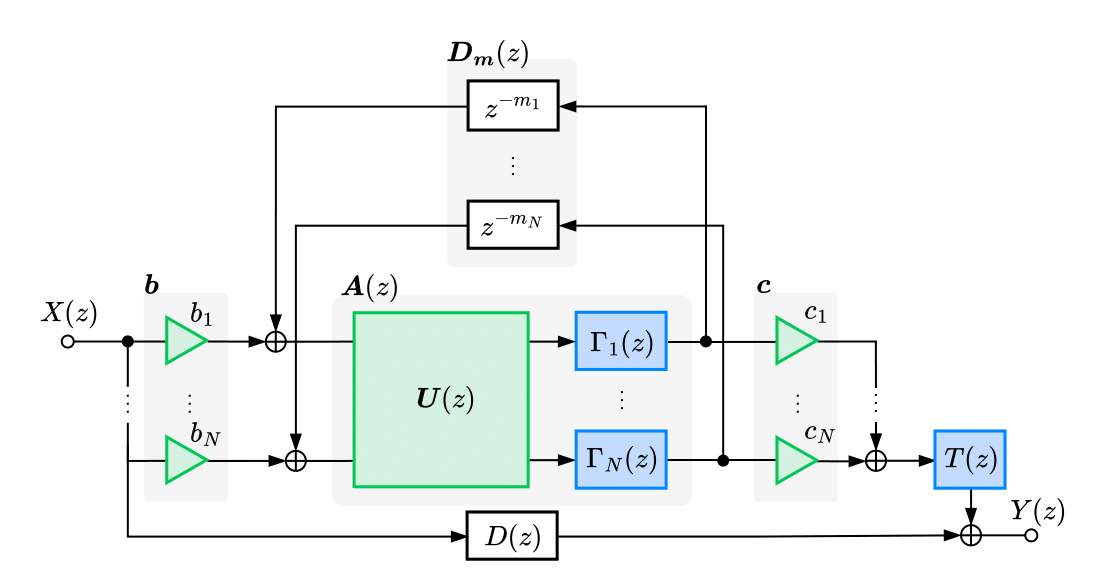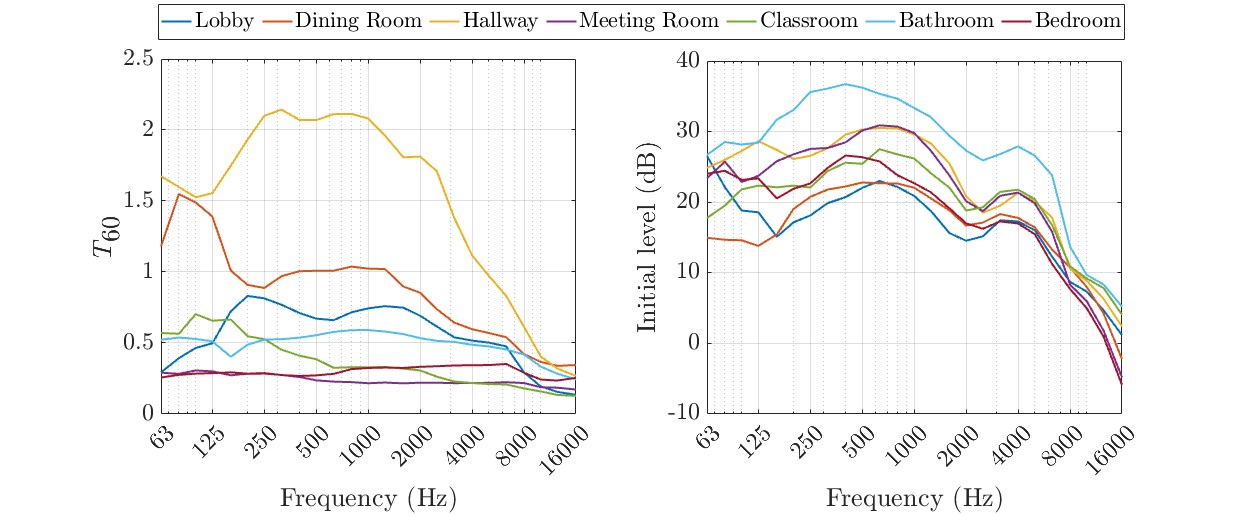Companion page for the paper submitted to the 27th International Conference on Audio Effcts (DAFx24), Guilford, UK, 3-7 September 2024 .
This page contains the sound examples utilized in the listening test outlined in the paper. The reverberated sounds are categorized by sound source, such as drum loop, speech, and saxophone, as well as by target room impulse response.
Code available at the Github Repository
Abstract
This paper improves the current state-of-the-art in delay-network-based analysis-synthesis of measured room impulse responses (RIRs). We propose an informed method incorporating improved energy decay estimation and synthesis within an optimized feedback delay network. The performance of the presented method is compared against an end-to-end deep learning approach. A formal listening test was conducted where participants assessed the similarity of reverberated material across seven distinct RIRs and three different sound sources. The results reveal that the performance of these methods is influenced by both the excitation sounds and the reverberation conditions. Nonetheless, the proposed method consistently demonstrates higher similarity ratings compared to the end-to-end approach across most conditions. However, achieving a perfect synthesis of measured RIRs remains a persistent challenge, underscoring the complexity of this problem. Overall, this work helps improve the sound quality of analysis-based artificial reverberation.
Differentiable Temporally Dense FDN
We use a size 6 FDN with 4-stage scattering feedback matrix with delay lines of length [593, 743, 929, 1153, 1399, 1699] samples (or [12.4 15.5 19.4 24.0 29.1 35.4] ms).
SOTA approaches involved in this work:
Colorless FDN - G. Dal Santo, K. Prawda, S. J. Schlecht, and V. Välimäki, Efficient Optimization of Feedback Delay Networks for Smooth Reverberation, arXiv preprint arXiv:2402.11216, 2024
Scattering Feedback Matrix - Schlecht, S.J., Habets, E.A.: Scattering in feedback delay networks. IEEE/ACM Tran. on Audio, Speech, and Language Processing 28, 2020
Two-stage Attenuation Filter - V. Välimäki, K. Prawda, and S. J. Schlecht, Two-stage attenuation filter for artificial reverberation, IEEE Signal Process. Lett., Jan. 2024
Accurate GEQ - J. Liski and V. Välimäki, The quest for the best graphic equalizer, in Proc. DAFx, Edinburgh, UK, Sep. 2017

Tested configurations
REF- - convolution with reference RIR
DiffFDN - proposed analysis/synthesis approach
RandFDN - proposed analysis/synthesis approach without colorless optimization
ARP-Net - S. Lee et al.'s artificial reverberator parameters estimation neural network
ANCHOR - FDN degraded from poor analysis-synthesis practices
RIR EDC information

The RIR used in the evaluation can be downloaded from MIT Survey
RIR ID: h229 h025 h042 h110 h027 h163 h001



